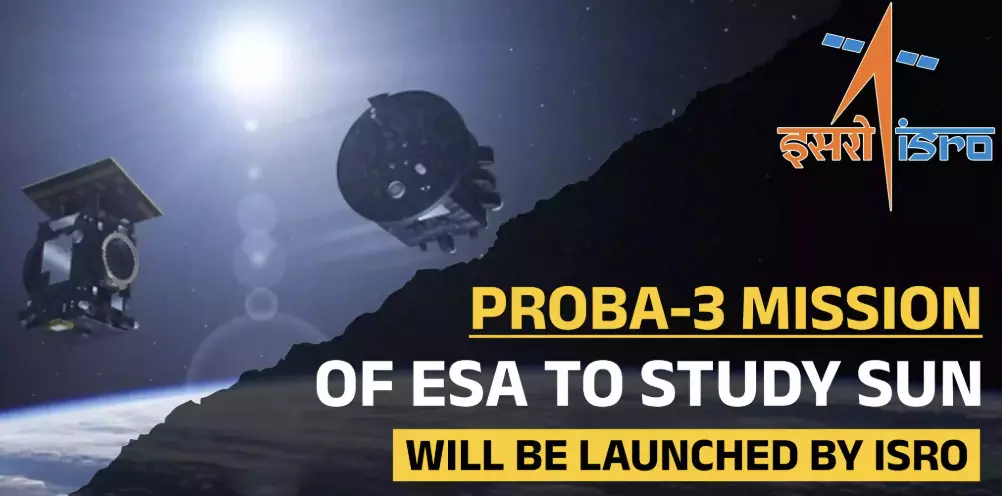ISRO and ESA collaborate on groundbreaking Proba-3 mission
ISRO and ESA collaborate on groundbreaking Proba-3 mission

The Indian Space Research Organisation (ISRO) is gearing up for an exciting collaboration with the European Space Agency (ESA) to launch the Proba-3 mission. This ambitious project, scheduled for December 2024, will see two spacecraft launched into space from the Satish Dhawan Space Centre in India using ISRO's PSLV-XL rocket.
The Proba-3 mission is unique as it involves two spacecraft, the Occulter Spacecraft (OSC) and the Coronagraph Spacecraft (CSC), that will fly in a precise formation. This pioneering arrangement will enable scientists to study the Sun's atmosphere, specifically the solar corona, in unprecedented detail.
At launch, the OSC will be stacked on top of the CSC. After reaching orbit, the two spacecraft will separate but continue to work in tandem, creating an advanced observational platform. This formation will allow for detailed and extended observations of the Sun's faint corona, potentially leading to new insights and discoveries about solar activity.
Once in space, the CSC will be filled with a special fuel that will facilitate its movements and maneuvers. The mission's unique orbit will enable the spacecraft to gather valuable data from a vantage point far from Earth, providing a clearer and more detailed view of the Sun.
In other news, a recent study published in the scientific journal Icarus proposes a new theory about the origins of Mars' moons, Phobos and Deimos. The research suggests that these moons may have formed from debris created when an asteroid was torn apart by Mars' gravity. This challenges previous theories and offers a potential explanation for their unusual shapes and near-circular orbits.
Unlike most moons, which are typically round, Phobos and Deimos are irregularly shaped, resembling potatoes. These peculiar characteristics have long puzzled scientists, prompting them to develop new models to better understand the formation and evolution of these Martian moons.

